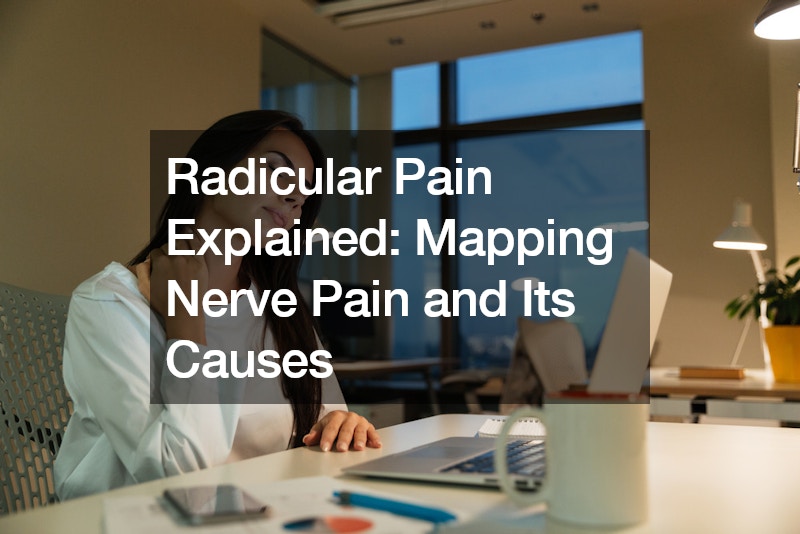Radicular pain is a sharp, often debilitating pain that originates from the nervous system. Unlike other aches, it’s not caused by general muscle strain but by damage to specific nerves, particularly those branching out from the spinal cord. A pain specialist can help diagnose radicular pain and determine the underlying cause.
The culprit behind radicular pain is typically irritation or compression of the spinal nerve roots. This can happen due to a herniated disc, bone spurs caused by arthritis, or even inflammation.
The consequence? The irritated nerve sends pain signals along its entire path, resulting in discomfort that radiates outward from the source of the compression.
Imagine the nerves branching out from your spine like the roots of a tree. When a specific root is pinched, the pain you feel travels along the entire branch, not just where the pinching occurs. This is why a pain specialist will often create a nerve map to pinpoint the affected nerve root based on the location and path of your pain.
Radicular pain can manifest in various ways, not just intense discomfort. Depending on the affected nerve, you might also experience numbness, tingling, or weakness in the muscles served by that nerve. Sciatica, a well-known example of radicular pain, affects the sciatic nerve, causing pain that radiates down the back of the leg.
If you suspect you might have radicular pain, consulting a pain specialist is crucial. Through a combination of physical examination, imaging tests, and your description of the pain, the specialist can diagnose the root cause (pun intended) of your discomfort. Early diagnosis and treatment are essential to prevent further nerve damage and ensure a faster recovery.
Pain specialists have a variety of treatment options available for radicular pain, ranging from physical therapy and medication to injections and minimally invasive procedures. The best course of action will depend on the severity and cause of your pain. By working with a pain specialist, you can find targeted relief and get back to living a pain-free life.
.





